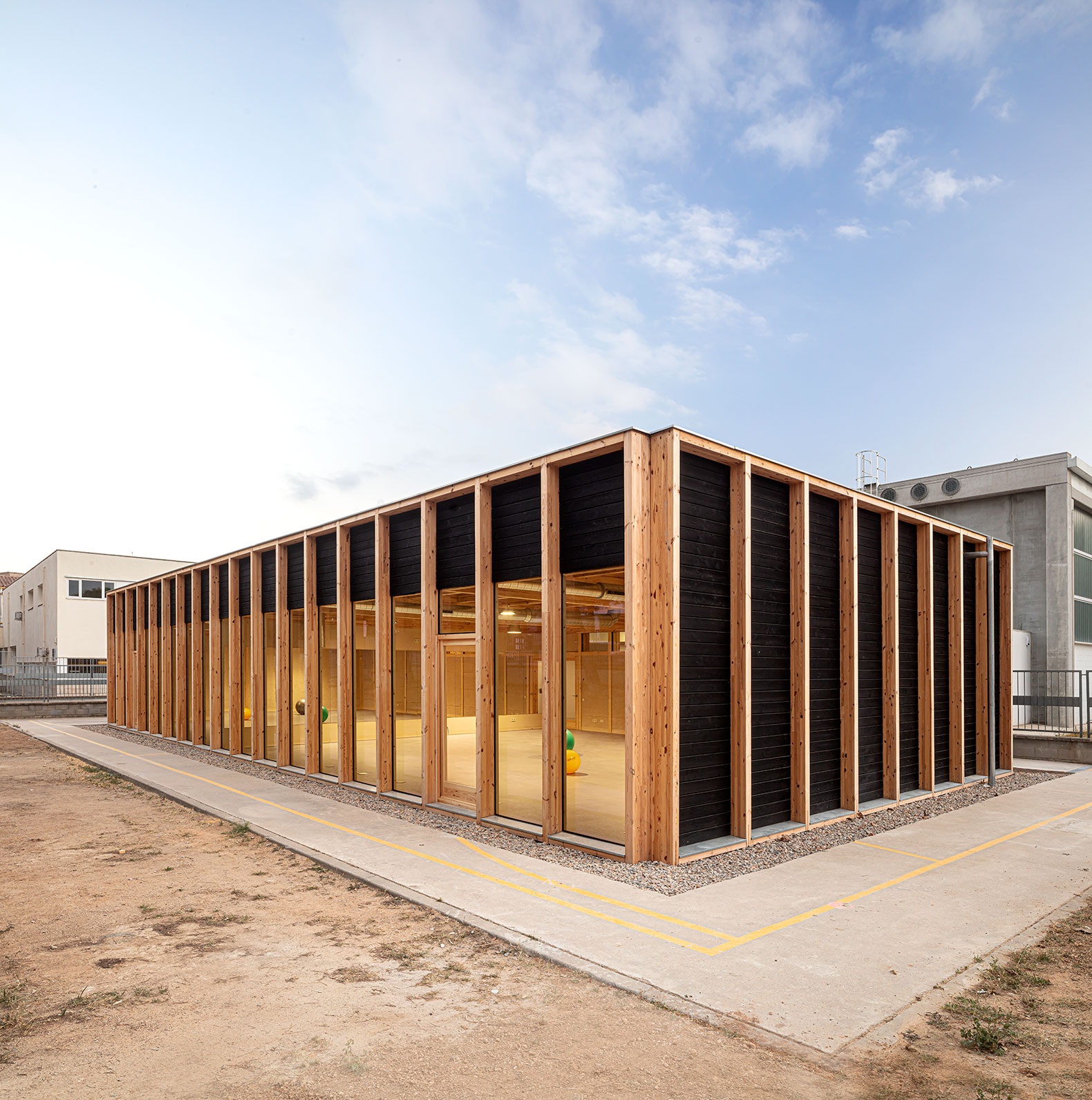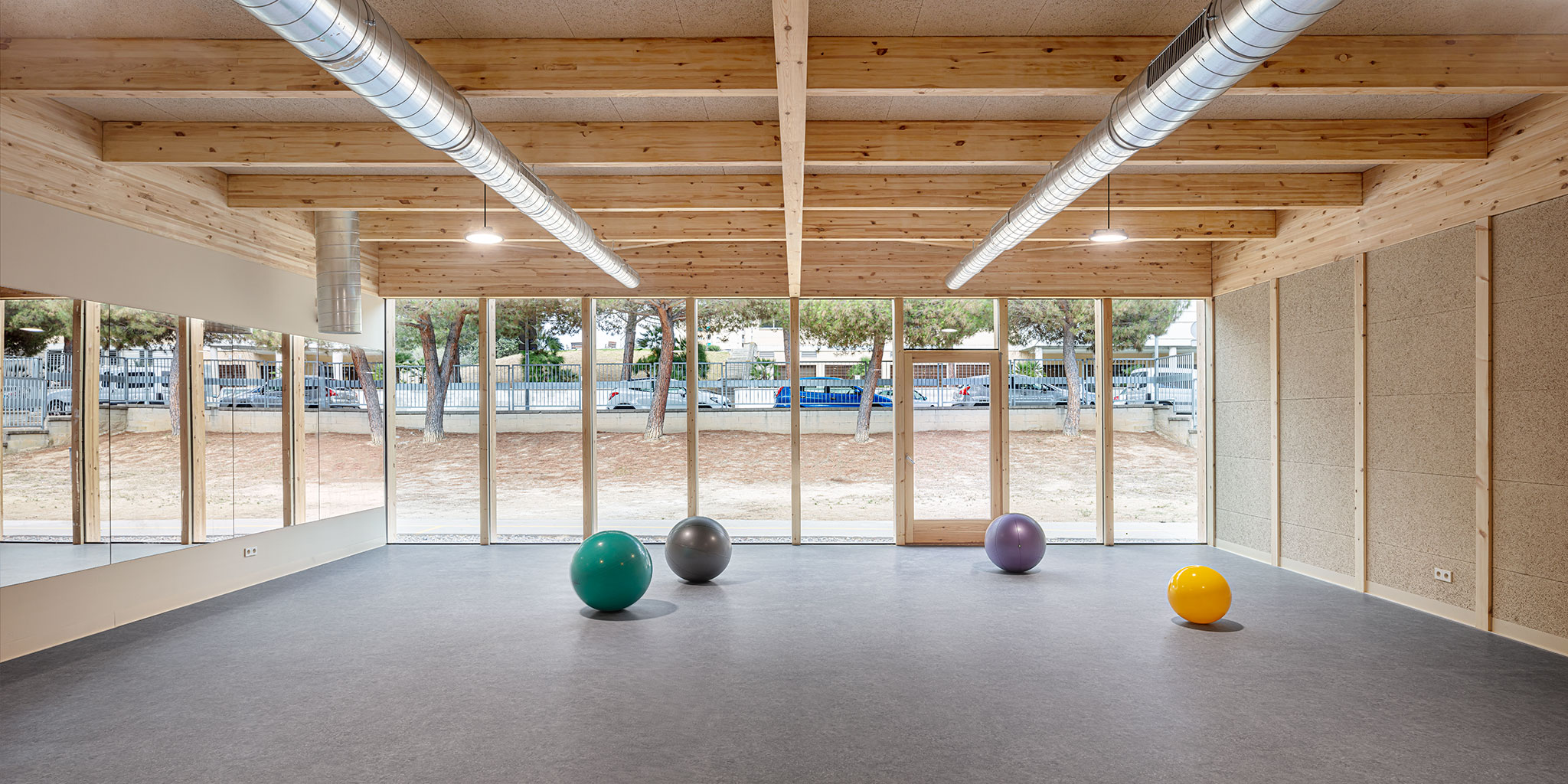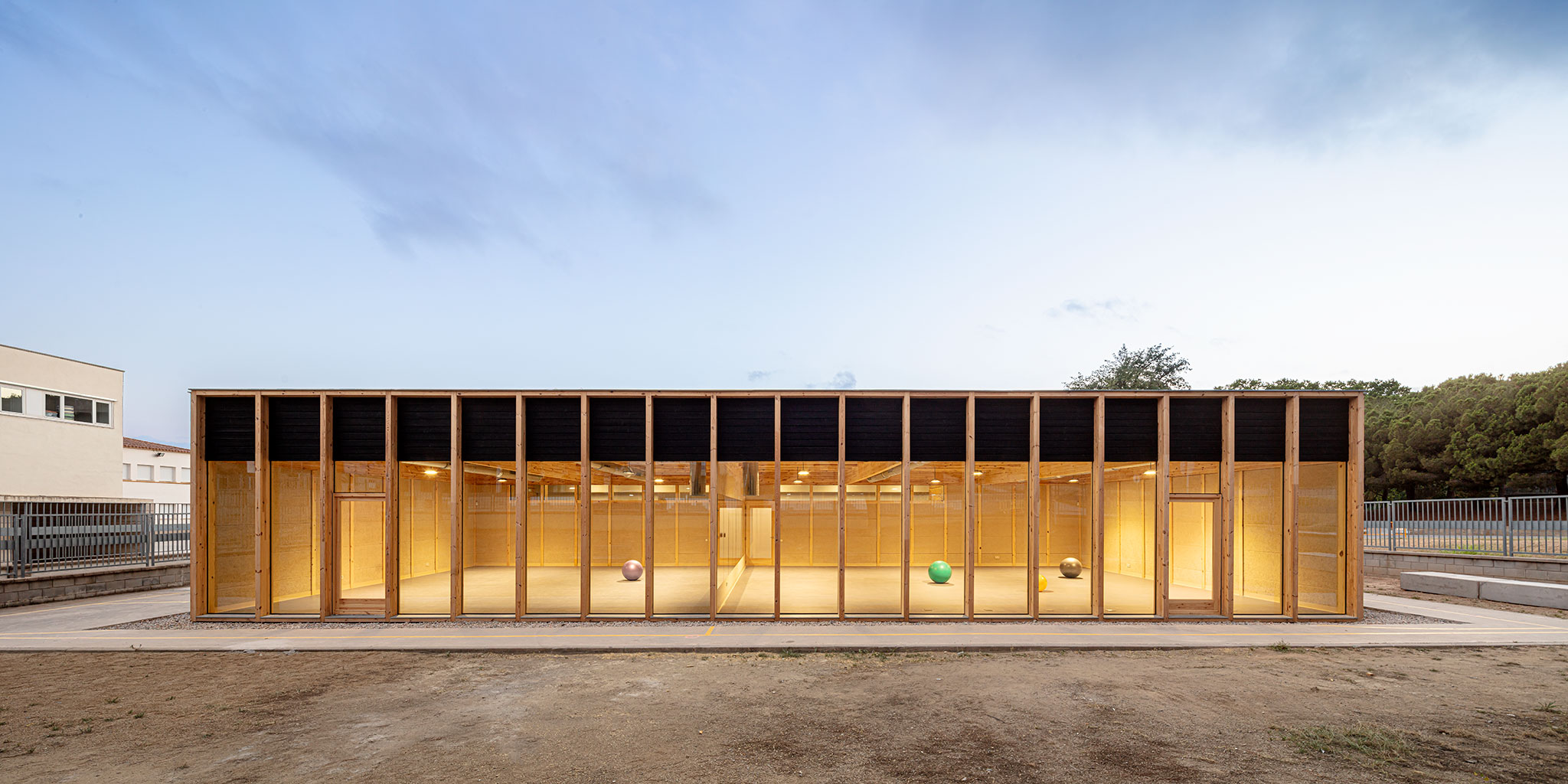With the project, the architects manage to generate a new space of comfort that protects users from the elements and allows new activities. The project is joined by a corridor of light crowned by a galvanized folded sheet with the old concrete box, which blurs the threshold into two bodies and builds an intermediate state that allows one to be between the soft and the hard place.

LV26 by Ágora Arquitectura. Photograph by Adrià Goulà.
Project description by Ágora Arquitectura
The assignment requires expanding a municipal gym.
We are on the western edge of Lliçà de Vall; between the agricultural valley of Tenes and the industrial plain of Vallès Oriental.
In the plot, these two different realities stand out. On the one hand, an old prefabricated concrete sports pavilion, a disused cement track and a set of railings built using galvanized sheets that give the place a marked factory character. On the other hand, a small group of pine trees on the NE side of the land, a soft sablon soil and a wooded background, which recalls the less present wild nature of the place.
The project seeks to soften the found artifice. Without undoing the present dichotomy. Taking advantage of discovery.

LV26 by Ágora Arquitectura. Photograph by Adrià Goulà.
Thus the idea of exploring wood arose; as a decarbonized material from the site, the module; as a constructively effective system of plot and light; as a natural resource, capable of creating a sustainable and healthy environment.
On the track, a prefabricated wooden box sits, separated 2m from the existing gym. The gesture generates a new state of comfort, protects the user from the elements and allows new activities, games and experiences in the old place. The action avoids unnecessary demolition, saves new construction and reuses existing infrastructure, putting old models from our obsolete industrial past in crisis.
On the track, a recycled wood - linoleum composed of cork flour - cushions, conditions and soundproofs the old floor for the new planned activity.

LV26 by Ágora Arquitectura. Photograph by Adrià Goulà.
Perimeter to the track, a forest of prefabricated natural wood pillars and girders allows the floor to be freed from the structure, establishing relationships with the verticality of the adjacent grove of trees and the pre-existing modular systems on the site.
Between the new pillars, a standardized TKH panel blinds the envelope, lightening the vertical and horizontal planes of the construction. When this enclosure exists, it is covered with fire-treated wood, using the oriental Yakisugi technique, to build an inert crust, which both disappears from the visual plane and reduces the maintenance cost of the envelope to zero. When TKH does not exist, a low emissive glass allows a new material relationship with the environment; During the day, a pine forest invades the new construction with its reflections. During the night, a new activity illuminates the city, turning the architecture into transparency.
The new wooden box is joined to the old concrete box by a corridor of light crowned by a galvanized folded sheet. The sheet metal re-signifies the idea of the limit on the plot. The light divides and allows coexistence between the two constructions. Blurs the threshold of the two bodies. Build an intermediate state. It makes it possible to be between the soft and the hard of the place. It happens throughout the project.






































